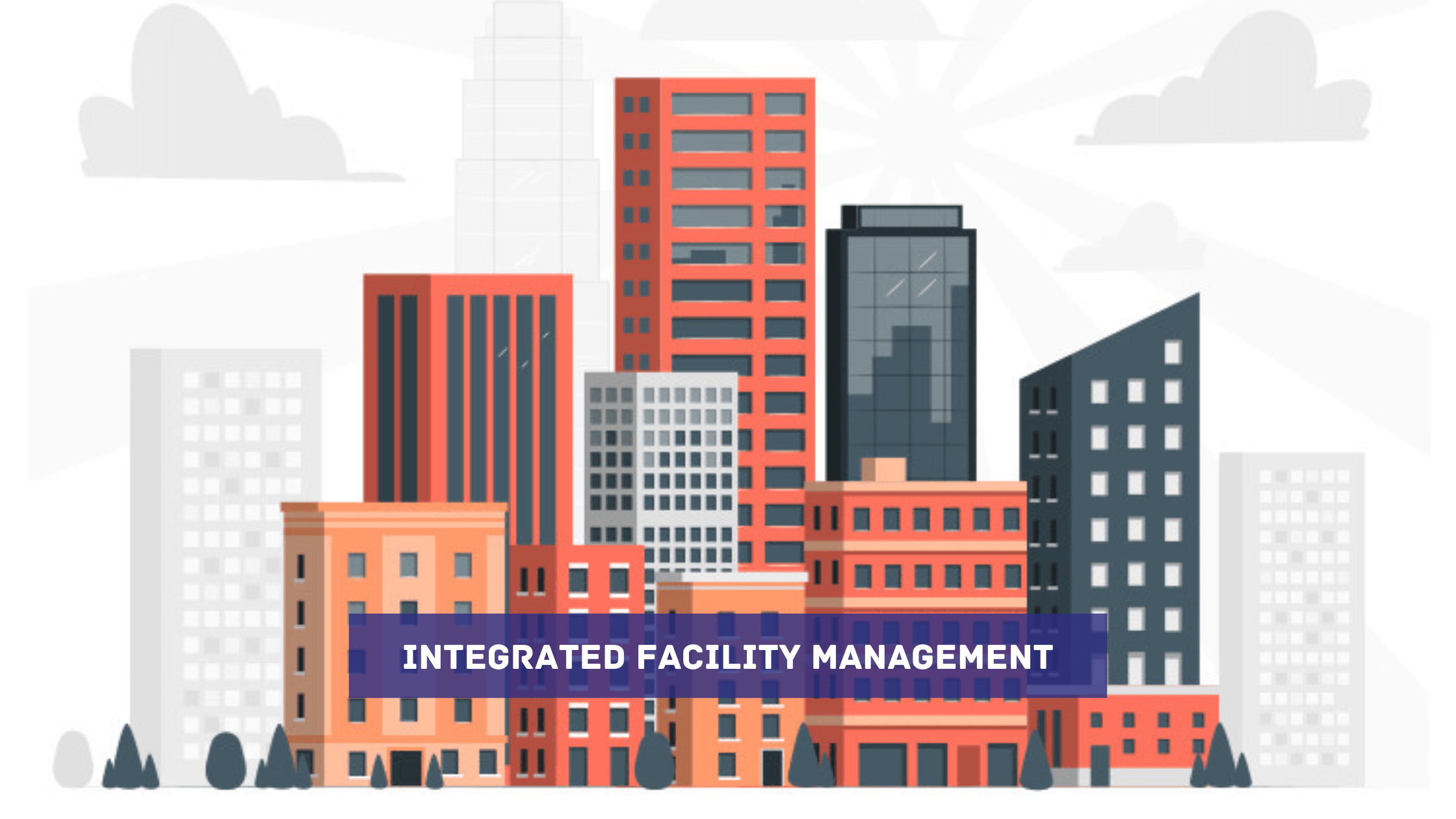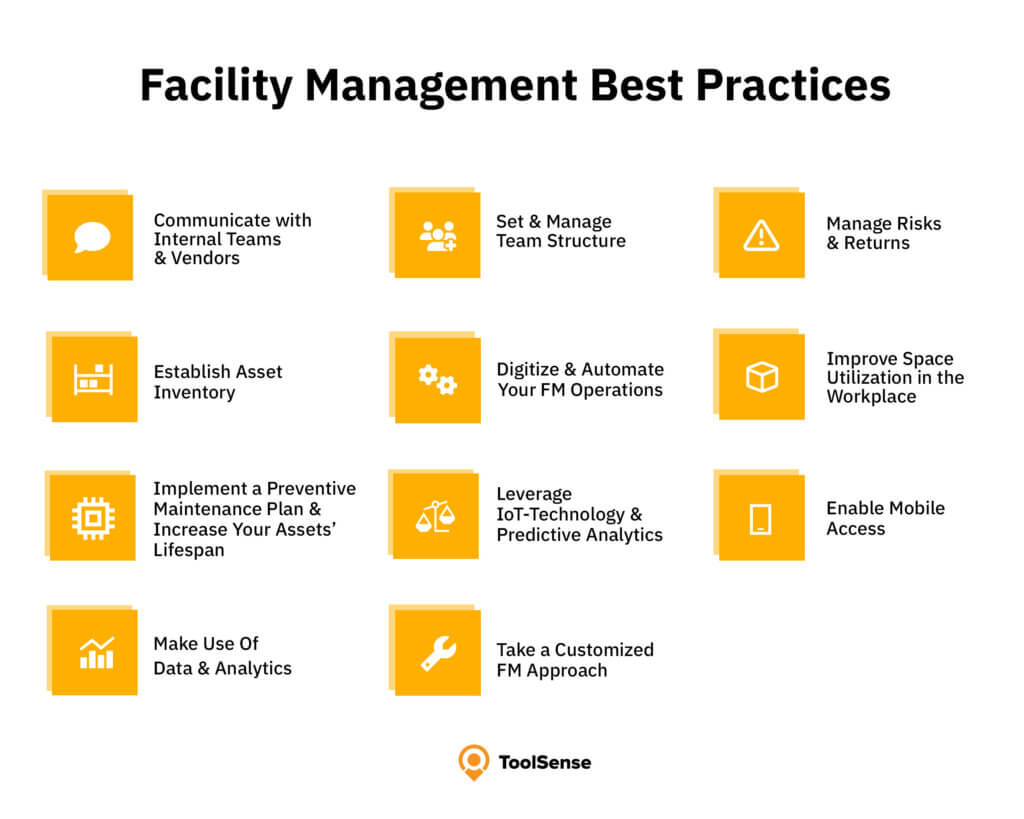The Important Overview to Facility Management: Approaches for Success
Facility administration plays an essential duty in the total success of a company, offering as the foundation that sustains efficiency, productivity, and safety. The subtleties of efficient facility administration expand past simple logistics and require a comprehensive understanding of both measurable and qualitative metrics.
Comprehending Facility Management
What comprises efficient center administration? Effective center administration encompasses the coordination of various business functions to ensure that built environments are secure, effective, and for performance. Facility Management. It incorporates the concepts of architecture, business, and design administration to create a smooth operational circulation within an organization
Crucial element of center monitoring include area preparation, maintenance monitoring, and conformity with health and wellness laws. Room planning focuses on optimizing making use of physical sources to support business goals, while upkeep management guarantees that centers are kept in optimum problem, maximizing lifespan and minimizing operational prices. Conformity with lawful and governing standards is important, as it safeguards the organization against potential responsibilities and enhances its credibility.
Moreover, reliable center monitoring relies on the tactical use innovation, such as Building Administration Equipment (BMS) and Computer-Aided Center Monitoring (CAFM) tools. These innovations facilitate real-time monitoring of building systems and improve maintenance procedures. Inevitably, a comprehensive method to facility management not just advertises functional performance yet additionally cultivates a positive environment for visitors and staff members alike, driving overall organizational success.
Key Techniques for Optimization
Optimizing facility administration needs a critical strategy that straightens operational experiment business goals. To accomplish this, the first key strategy is the implementation of integrated technological remedies. Making use of sophisticated software application systems enables real-time tracking of facility procedures, promoting data-driven decision-making and boosting total performance.
Secondly, regular analyses of center efficiency are necessary. Carrying out routine inspections and audits makes it possible for center managers to recognize areas that need improvement, guaranteeing that resources are alloted properly. This positive strategy helps in minimizing downtime and boosting service distribution.
Another essential strategy is fostering collaboration throughout departments. By encouraging open communication in between teams, facility managers can much better straighten their techniques with organization goals, leading to enhanced operational synergy. In addition, engaging personnel in training programs promotes a culture of responsibility and improves their capacity to add to optimization efforts.
Enhancing Security Procedures
Strengthening security procedures is necessary for producing a protected setting within facilities. A thorough safety procedure not just protects workers and visitors yet likewise enhances functional efficiency. To accomplish this, center supervisors must carry out regular risk evaluations to determine possible risks and make certain that ideal measures are in place.
Training and education are crucial elements of efficient security procedures - Facility Management. Workers need to get continuous training in emergency procedures, equipment handling, and personal protective procedures. Normal drills, such as fire discharges or lockdown treatments, foster experience and readiness amongst personnel
Furthermore, clear interaction channels should be developed to report safety and security problems promptly. This consists of developing an accessible system for staff members to articulate possible threats or incidents without anxiety of retribution. In addition, leveraging modern technology can boost precaution; for instance, carrying out surveillance systems and access controls assists keep track of center tasks and restrict unapproved entry.
Finally, compliance with neighborhood regulations and sector criteria is non-negotiable. Routine audits and reviews of safety and security methods guarantee placement with current laws and best techniques. By focusing on these methods, facility supervisors can cultivate a society of security that secures all stakeholders and inevitably contributes go to this site to the company's success.
Improving Office Setting

Ergonomic factors to look at this site consider are crucial to minimize physical stress and pain. Facility Management. This entails giving flexible furnishings, appropriate lighting, and adequate space for movement. These adjustments can cause minimized absenteeism and raised work satisfaction
Aesthetic appeals play a vital role fit the workplace atmosphere. Using shade psychology, all-natural lighting, and plant can promote a boosting and welcoming environment. Attentively made areas can increase creative thinking and enhance overall health.
In addition, motivating employee involvement through comprehensive decision-making procedures can enhance the feeling of ownership and belonging. Collecting feedback on office enhancements and including staff members in the style procedure can result in an extra tailored setting that fulfills their needs.
Finally, advertising wellness campaigns, such as wellness programs and leisure spaces, can further add to a supportive work environment society. By focusing on these techniques, facility supervisors can efficiently improve the workplace setting, driving both worker satisfaction and organizational success.
Determining Success in Facilities
Gauging success in facility monitoring needs a thorough method that examines both qualitative and quantitative metrics. Measurable metrics usually consist of vital performance indicators (KPIs) such as room utilization rates, energy usage, upkeep prices, and occupancy levels. These metrics offer a clear image of Website functional performance and financial performance, permitting facility managers to identify areas for renovation and standard versus sector standards.
Qualitative metrics, on the other hand, focus on customer fulfillment and staff member involvement. Studies and responses devices can assess just how well the centers satisfy the requirements of passengers, aiding to examine the total office atmosphere. This element is vital, as a completely satisfied workforce is typically linked to enhanced productivity and retention rates.
To effectively determine success, facility managers should additionally take into consideration incorporating technology, such as developing management systems and information analytics devices, to gather and evaluate appropriate information. Consistently assessing both sets of metrics permits a more balanced view of efficiency and notifies strategic choices. Eventually, a successful center administration strategy pivots on a commitment to continuous renovation, ensuring that both functional effectiveness and user contentment are focused on.
Conclusion

Center management plays an important function in the overall success of a company, offering as the backbone that sustains safety and security, performance, and productivity.Secret aspects of facility management consist of space preparation, maintenance monitoring, and compliance with health and safety and security policies.Furthermore, reliable facility administration depends on the tactical usage of technology, such as Structure Management Solution (BMS) and Computer-Aided Center Administration (CAFM) devices. Ultimately, a detailed strategy to center monitoring not only promotes operational effectiveness but likewise promotes a favorable atmosphere for employees and visitors alike, driving overall organizational success.
Eventually, an effective facility monitoring approach pivots on a commitment to continuous enhancement, making certain that both functional performances and user satisfaction are prioritized.